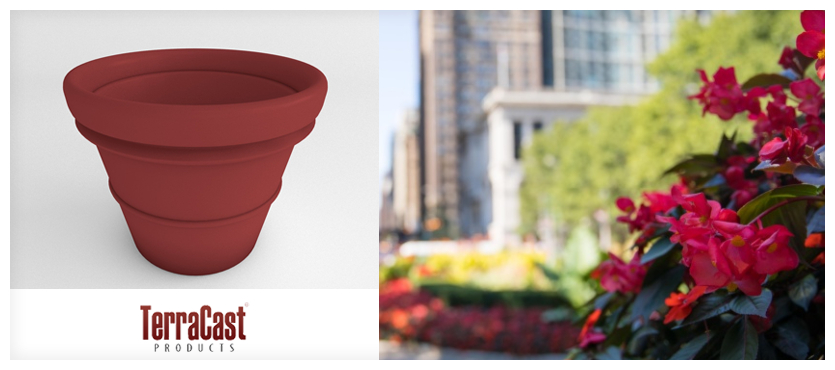Urban landscaping plays a vital role in creating functional, inviting, and aesthetically pleasing public spaces. Planters are a fundamental part of this equation, adding greenery and character to cityscapes. However, the materials used for these planters can greatly impact the success and efficiency of a project. Metal planters, while often praised for their durability and classic appearance, present significant challenges in terms of weight and practicality. As urban environments continue to demand flexible, sustainable, and cost-effective solutions, it’s crucial to examine whether heavy metal planters are still the best choice.
The Problem with Heavy Metal Planters
Metal planters, particularly those made of materials like steel or cast iron, are significantly heavier than their resin or plastic counterparts. While their weight can be an advantage in certain scenarios—such as providing stability in high-wind areas—it often poses serious logistical and practical challenges.
Difficult Transportation and Installation
One of the primary issues with heavy metal planters is the effort and cost involved in transporting and installing them. Moving these planters requires specialized equipment like forklifts or cranes, particularly for larger pieces. This not only increases the initial expense but also complicates logistics in urban environments where accessibility is often limited.
Urban landscaping projects frequently involve tight deadlines and busy public spaces. The added time and resources needed to transport and install heavy planters can delay projects and disrupt pedestrian and vehicular traffic, creating inconveniences for residents and businesses alike.
Limited Flexibility in Placement
Once installed, the sheer weight of metal planters makes them difficult to relocate. Urban landscaping often requires adaptability to accommodate changing designs, seasonal displays, or evolving community needs. Heavy planters can restrict this flexibility, locking cities into static designs that may not serve long-term goals.
For instance, repositioning planters for a temporary event or redesigning a public space becomes a costly and labor-intensive process when dealing with metal planters. Their lack of mobility contrasts sharply with lightweight alternatives that can be easily adjusted to suit new requirements.
Impact on Urban Infrastructure
The weight of metal planters can also pose risks to the infrastructure of urban spaces. Sidewalks, rooftops, and other elevated surfaces may not be designed to bear the load of heavy planters, leading to potential damage or safety hazards. Over time, the strain caused by these planters can result in cracks, sinking, or other structural issues, further increasing maintenance costs.
In contrast, lightweight materials like resin are less likely to exert excessive pressure on infrastructure, making them a safer and more practical choice for diverse urban applications.
Maintenance Challenges
While weight is a significant drawback, it’s not the only challenge associated with metal planters. Metal is susceptible to rust and corrosion, particularly in environments with high humidity or salt exposure, such as coastal cities. Maintaining metal planters often requires additional labor and materials, such as rust-proof coatings, paint, or sealants. These ongoing maintenance needs further add to the long-term costs and inconvenience of using metal planters in urban landscaping.
The Resin Advantage: A Lightweight Solution
Resin planters address many of the challenges posed by their metal counterparts, offering a lightweight, durable, and versatile alternative for urban landscaping. Their reduced weight makes them easy to transport and install without the need for heavy machinery, streamlining project timelines and minimizing disruptions in public spaces.
Additionally, resin planters provide the flexibility that urban projects demand. They can be easily repositioned or reconfigured to accommodate new designs, temporary events, or seasonal changes, ensuring that public spaces remain dynamic and adaptable.
Durability and Low Maintenance
Unlike metal planters, resin planters are impervious to rust and corrosion, making them ideal for a variety of environments, including coastal and high-humidity areas. Their weather-resistant properties ensure that they maintain their appearance and functionality over time without requiring extensive upkeep. This durability, combined with their lightweight nature, makes resin planters a cost-effective and practical choice for cities looking to enhance their green spaces.
Versatile Design Options
Resin planters also offer unparalleled design versatility. They can be molded into a variety of shapes, sizes, and finishes, mimicking the look of traditional materials like metal or stone while maintaining the benefits of lightweight construction. This adaptability allows urban planners and designers to achieve the desired aesthetic without compromising on practicality.
A Smarter Choice for Urban Landscaping
While metal planters may have once been a go-to option for urban landscaping, their weight and associated challenges make them less practical in today’s fast-paced and adaptable urban environments. Resin planters provide a lightweight, durable, and flexible alternative, ensuring that cities can create beautiful, functional green spaces without the logistical headaches.
For those looking to revolutionize their urban landscaping projects, TerraCast® offers a wide range of high-quality resin planters designed to meet the unique needs of modern cities. To explore our products and learn more about how they can enhance your next project, contact us today.

